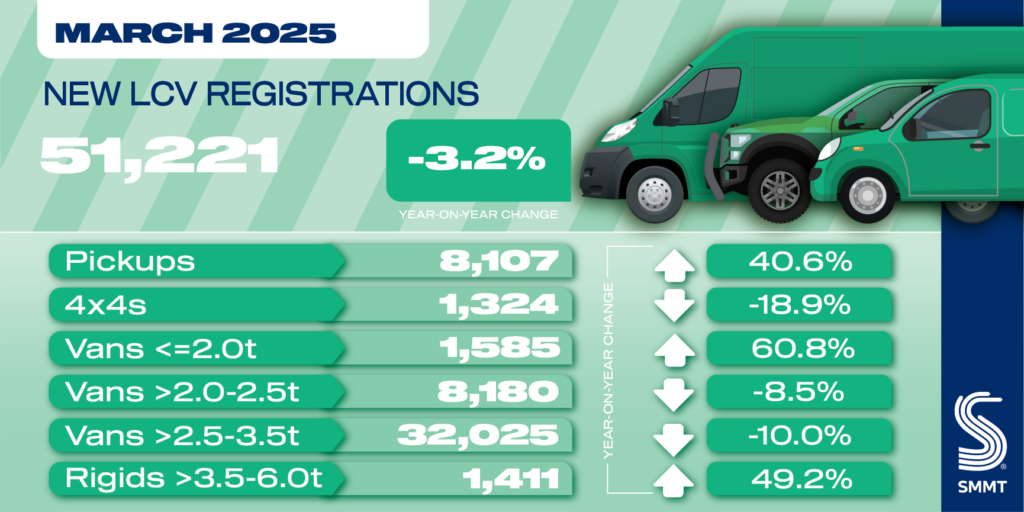From 2-for-1 to 10-for-1: Use a Stock Split Calculator to Track Your Portfolio
Introduction to Stock Splits In today’s dynamic financial markets, staying updated on the movements of your investment portfolio is more crucial than ever. One of the key corporate actions that can significantly impact your holdings is the stock split. A stock split not only adjusts the number of shares you own but also recalibrates the share price, ensuring the overall market capitalization remains unchanged. Investors often face challenges in manually tracking these changes, especially when dealing with multiple split ratios—from a simple 2-for-1 to an aggressive 10-for-1 split. By using a reliable tool like the Stock Split Calculator, you can effortlessly manage these changes, ensuring that your financial analyses are both accurate and insightful. Understanding Stock Splits A stock split involves a company increasing the number of its outstanding shares by issuing more shares to current shareholders. Although the overall value of your investment remains constant, adjustments occur in the number of shares held and the value of each share. For instance, in a 2-for-1 stock split, every share you own is split into two, thus halving the share price while doubling your share count. This process helps lower the cost per share, making the stock more accessible for a broader range of investors. Such strategic maneuvers can also boost the liquidity of the stock, often resulting in enhanced trading activity. Impact on Your Portfolio While the total market value of your investment stays the same, tracking these adjustments might be tricky if done manually. This is where the simplicity of modern tools shines through. The Stock Split Calculator provides you with an automated way to calculate your new share counts and prices, leaving you more time to focus on your investment strategy. Benefits of Using a Stock Split Calculator In the fast-paced world of investing, precision and time management are key to success. Here are some of the primary benefits of incorporating a dedicated tool into your routine: Accuracy: Get exact figures of your post-split share count without the hassle of manual calculations. Convenience: Easily input your current holdings and the split ratio to receive immediate results. Efficiency: Save time by avoiding multiple steps involved in recalculating share prices and numbers. Clarity: Understand the specific effects that various split ratios have on your portfolio, allowing for better strategic planning. With such benefits, it is no surprise that a growing number of investors are turning to the Stock Split Calculator as an essential tool for portfolio management. How to Use a Stock Split Calculator: A Step-by-Step Guide Whether you’re a seasoned investor or just starting your journey, leveraging technology is key to nuanced financial analysis. Here is a brief guide on how to get started with a stock split calculator: Step 1: Input Your Current Investment Data Begin by entering the number of shares you currently hold along with the current share price. This foundational data allows the calculator to accurately determine what your portfolio will look like after a split. Step 2: Select the Split Ratio Whether your shares are undergoing a modest 2-for-1 split or a more dramatic 10-for-1 split, simply choose the appropriate ratio. The tool is designed to work seamlessly with a variety of split scenarios. Step 3: Review Your Updated Portfolio After processing the inputs, the calculator displays your new total share count and the adjusted share price. This breakdown gives you clear insights into how the stock split affects your overall investment, enabling you to adjust your strategies accordingly. Real-World Applications and Strategic Insights Stock splits are common in thriving industries where companies wish to increase market participation and enhance liquidity. By monitoring these changes using the Stock Split Calculator, investors can gain a competitive edge. For instance, a technology firm might announce a sizable stock split to attract more small-scale investors, thereby broadening its shareholder base. With precise computational tools, you can quickly ascertain whether such an event is beneficial and how it aligns with your broader investment strategy. Moreover, understanding the dynamics of stock splits can offer deeper insights into market trends. By comparing past splits with current ones, you may recognize patterns that can inform smarter trading decisions. Whether it’s a routine split or an unexpected market event, having robust tools at your disposal ensures that you remain proactive rather than reactive. Key Considerations for Investors While a stock split itself does not change the intrinsic value of your holdings, it can influence market perception and trading volume. Here are some key points to consider: Market Psychology: Lower share prices may entice more

Introduction to Stock Splits
In today’s dynamic financial markets, staying updated on the movements of your investment portfolio is more crucial than ever. One of the key corporate actions that can significantly impact your holdings is the stock split. A stock split not only adjusts the number of shares you own but also recalibrates the share price, ensuring the overall market capitalization remains unchanged. Investors often face challenges in manually tracking these changes, especially when dealing with multiple split ratios—from a simple 2-for-1 to an aggressive 10-for-1 split. By using a reliable tool like the Stock Split Calculator, you can effortlessly manage these changes, ensuring that your financial analyses are both accurate and insightful.
Understanding Stock Splits
A stock split involves a company increasing the number of its outstanding shares by issuing more shares to current shareholders. Although the overall value of your investment remains constant, adjustments occur in the number of shares held and the value of each share. For instance, in a 2-for-1 stock split, every share you own is split into two, thus halving the share price while doubling your share count. This process helps lower the cost per share, making the stock more accessible for a broader range of investors. Such strategic maneuvers can also boost the liquidity of the stock, often resulting in enhanced trading activity.
Impact on Your Portfolio
While the total market value of your investment stays the same, tracking these adjustments might be tricky if done manually. This is where the simplicity of modern tools shines through. The Stock Split Calculator provides you with an automated way to calculate your new share counts and prices, leaving you more time to focus on your investment strategy.
Benefits of Using a Stock Split Calculator
In the fast-paced world of investing, precision and time management are key to success. Here are some of the primary benefits of incorporating a dedicated tool into your routine:
- Accuracy: Get exact figures of your post-split share count without the hassle of manual calculations.
- Convenience: Easily input your current holdings and the split ratio to receive immediate results.
- Efficiency: Save time by avoiding multiple steps involved in recalculating share prices and numbers.
- Clarity: Understand the specific effects that various split ratios have on your portfolio, allowing for better strategic planning.
With such benefits, it is no surprise that a growing number of investors are turning to the Stock Split Calculator as an essential tool for portfolio management.
How to Use a Stock Split Calculator: A Step-by-Step Guide
Whether you’re a seasoned investor or just starting your journey, leveraging technology is key to nuanced financial analysis. Here is a brief guide on how to get started with a stock split calculator:
Step 1: Input Your Current Investment Data
Begin by entering the number of shares you currently hold along with the current share price. This foundational data allows the calculator to accurately determine what your portfolio will look like after a split.
Step 2: Select the Split Ratio
Whether your shares are undergoing a modest 2-for-1 split or a more dramatic 10-for-1 split, simply choose the appropriate ratio. The tool is designed to work seamlessly with a variety of split scenarios.
Step 3: Review Your Updated Portfolio
After processing the inputs, the calculator displays your new total share count and the adjusted share price. This breakdown gives you clear insights into how the stock split affects your overall investment, enabling you to adjust your strategies accordingly.
Real-World Applications and Strategic Insights
Stock splits are common in thriving industries where companies wish to increase market participation and enhance liquidity. By monitoring these changes using the Stock Split Calculator, investors can gain a competitive edge. For instance, a technology firm might announce a sizable stock split to attract more small-scale investors, thereby broadening its shareholder base. With precise computational tools, you can quickly ascertain whether such an event is beneficial and how it aligns with your broader investment strategy.
Moreover, understanding the dynamics of stock splits can offer deeper insights into market trends. By comparing past splits with current ones, you may recognize patterns that can inform smarter trading decisions. Whether it’s a routine split or an unexpected market event, having robust tools at your disposal ensures that you remain proactive rather than reactive.
Key Considerations for Investors
While a stock split itself does not change the intrinsic value of your holdings, it can influence market perception and trading volume. Here are some key points to consider:
- Market Psychology: Lower share prices may entice more investors, which can lead to increased market activity.
- Portfolio Management: Accurate recalculations post-split are essential for rebalancing and future planning.
- Long-Term Strategy: Understanding historical trends in stock splits can provide insights into potential future market movements and growth opportunities.
In such a scenario, the Stock Split Calculator becomes more than just a tool—it turns into a critical component of your investment toolkit.
Conclusion
Navigating the complexities of the stock market can be challenging, particularly when corporate actions like stock splits come into play. However, with the right tools and insights, you can ensure that your portfolio is always accurately aligned with market conditions. The Stock Split Calculator is an excellent resource that offers precise, real-time calculations for both minor and major stock splits. By integrating this tool into your investment routine, you empower yourself to make well-informed decisions and seize opportunities in an ever-evolving market.
Embrace this technology to not only streamline your portfolio management but also to gain deeper insights into market trends and investor behavior. In a landscape where every detail counts, having a reliable calculator at your fingertips can be the difference between a reactive approach and proactive investment growth.


















_Christophe_Coat_Alamy.jpg?#)






















































